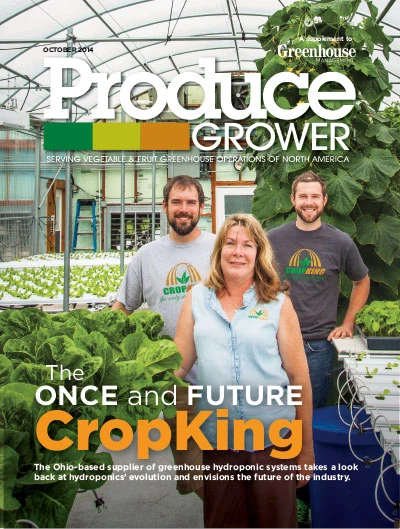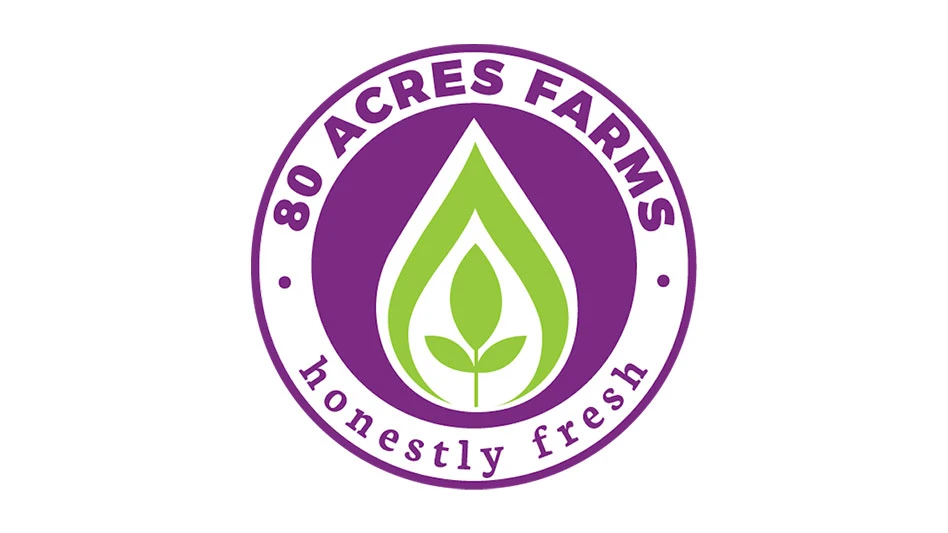
 Jeff and Marianne Marstaller, owners of Cozy Acres Greenhouses, began growing in greenhouses nearly 25 years ago. Most of their production was stored in double poly, 28 by 96 feet houses. Prior to 2013, the Marstallers were primarily growing annuals with a sprinkling of herbs and vegetables, all of which were marked for local garden centers and landscapers. When the Maine winters dumped a small mountain of snow on their facilities, they kept the temperatures grow-able using Modine propane heaters.
Jeff and Marianne Marstaller, owners of Cozy Acres Greenhouses, began growing in greenhouses nearly 25 years ago. Most of their production was stored in double poly, 28 by 96 feet houses. Prior to 2013, the Marstallers were primarily growing annuals with a sprinkling of herbs and vegetables, all of which were marked for local garden centers and landscapers. When the Maine winters dumped a small mountain of snow on their facilities, they kept the temperatures grow-able using Modine propane heaters.
Then, three years ago, Jeff decided he wanted to reduce his propane needs (close to 10,000 gallons per year) and add an eco-friendly dimension to his growing. He began exploring alternative heating options.
“I settled on a 6-ton geothermal system that could offer some of the heat for one greenhouse,” he says.
Shortly after he made that decision, Jeff became aware of a Maine Department of Agriculture program titled “Farms for the Future,” a competitive grant program that provides business planning assistance and investment support for growers. The Farms for Future program requires an 18-month project planning period that culminates in a presentation to a review panel. The panel then determines the viability of a proposed project. Inspired to expand upon his initial idea, Cozy Acres proposed a greenhouse that would be heated year-round using sustainable systems and would generate zero harmful emissions.
Jeff says the project’s goal could be succinctly summarized like this: “Electricity from the sun, heat from the Earth and emissions at zero.”
The Marstallers passed the review panel and were given a $25,000 grant, contingent upon owner investment reaching $100,000. They also applied for a grant through the USDA’s Rural Energy for America Program (REAP), which granted 25 percent of the energy cost portion of a project and was bestowed upon Cozy Acres Greenhouses.
“With the two grant programs in-line we began construction during the summer of 2012,” Jeff says.
If You Build It...
Work on the new greenhouse, and its accompanying heating and power systems, was nearing completion in the fall of 2013. As the leaves exploded in a last gasp of color before the coming winter, the Marstallers worked to install a 30 kilowatt photovoltaic system on site. The system will generate almost 39,000 kilowatt hours (kWhr) annually. They also constructed a 30 by 96 feet Conley greenhouse, using 8 millimeter (mm) polycarbonate and 16 mm acrylic for glazing. A 10-ton geothermal system, attached to a mile of horizontal, closed loop poly lines was constructed to be the only heat source for the greenhouse.
The new facility went online on December 12, 2013. To date, it has used 29,000 of the 39,000 kWhr available. “The electricity is sent back into the grid for credits when the generation is high and facility usage is low,” Jeff says. “Those credits are then used when our demands are high. Our usage is monitored by an electrical meter on the incoming line of the Conley greenhouse.”
Jeff is confident the remaining 10,000 kWhr will help the facility reach its anniversary date in a couple of months.
“We believe that we have the only year-round, fully heated greenhouse with zero emissions in the northern states,” he says.
Somewhat surprisingly, maintenance for the new Conley greenhouse, and its accompanying heating and electric systems, is easier than the Marstaller’s other greenhouses. The facility has two ridge vents and a side vent for cooling. With those vents and the greenhouse doors open, Jeff says they will turn off the horizontal air flow fans and have no electrical needs for 5 to 6 months.
The Marstallers hope to install a heat/shade curtain for the Conley greenhouse. They’re hoping to receive federal grant money through the National Resources Conservations Service and its Environemental Quality Incentives Program. They also received funding for adding insulation board along almost 1,400 running feet of roll-up sides.
The Conley greenhouse also gives the Marstallers a year-round growing option, whereas their other greenhouses are primarily operational during the spring. It will not be used for the production of annuals, but microgreens.
“Our goal is to grow microgreens for the 10 months wrapped around the spring’s veggie and herb season. The 7-14 day crop cycle keeps us ahead of the aphids, as compared to winter greens that are on the benches for months on end,” Jeff says. “We may do some lettuces and greens this winter but as the microgreen sales increase we may reduce the lettuces and greens, or move some winter production into the existing, conventional greenhouses.”
Green, the Color of Money
Savings for a progressive system like the Marstallers can be difficult to measure. The up-front cost of installing photovoltaic panels and a geothermal heating system can be immense, especially when coupled with the cost of constructing a new greenhouse. Jeff estimates that the initial costs numbered more than $200,000. This number is offset by grants (more than $75,000) and accelerated depreciation/tax savings and tax credits (more than $75,000).
 During the spring of 2014, the Marstallers filled the new greenhouse with vegetables and herbs. Both conventional and certified organic crops were grown. Everything within the greenhouse was fertilized with OMRI-listed fertilizers fed through a Dosatron.
During the spring of 2014, the Marstallers filled the new greenhouse with vegetables and herbs. Both conventional and certified organic crops were grown. Everything within the greenhouse was fertilized with OMRI-listed fertilizers fed through a Dosatron.
“We’re organically certified by one of our state’s most popular certifying groups, MOFGA (Maine Organic Farmers and Gardeners Association),” Jeff says.
During the summer and into the fall, Cozy Acres began organically certified microgreen production. Local restaurants, cafes and bakeries have been using the company’s microgreens. Whole Foods has also expressed interest in offering some of Cozy Acres’ products in its stores.
Getting the word out
To market the benefits of their new greenhouse the Marstallers employed the help of their daughter, a Public Relations employee at a Wisconsin firm. Their daughter, with the help of her firm, developed a branding and marketing plan designed around the new “Zero Emissions” greenhouse. A simple, clean banner reads “Electricity from the Sun. Heat from the Earth. Emissions at Zero …Mother Nature approved.”
Below the text is a logo and the phrase “Positively Zero.” The Marstallers provide that 3 by 5 feet banner to each of the garden centers that sells Cozy Acres Farms products. Jeff says that initial excitement over the campaign has been promising.
He anticipates “Zero Emissions” technology growing in popularity moving forward and he is hoping to get ahead of cresting interest and attach his farm, and “Zero Emissions” brand, to the popularity wave.
“We hope that the branding will increase the value of the produce grown inside the greenhouse, as well as the value of the property,” Jeff says.
Get curated news on YOUR industry.
Enter your email to receive our newsletters.
Explore the October 2014 Issue
Check out more from this issue and find your next story to read.
Latest from Produce Grower
- The Growth Industry Episode 3: Across the Pond with Neville Stein
- University of Evansville launches 'We Grow Aces!' to tackle food insecurity with anu, eko Solutions
- Lawsuit challenges new H-2 visa rules
- Q&A: Sandra Eskin Leads Food Safety Advocacy Organization, STOP, as CEO
- Find out what's in FMI's Power of Produce 2025 report
- Martin A. Makary Sworn in as FDA Commissioner
- PG CEA HERB Part 2: Analyzing basil nutrient disorders
- LettUs Grow, KG Systems partner on Advanced Aeroponics technology





